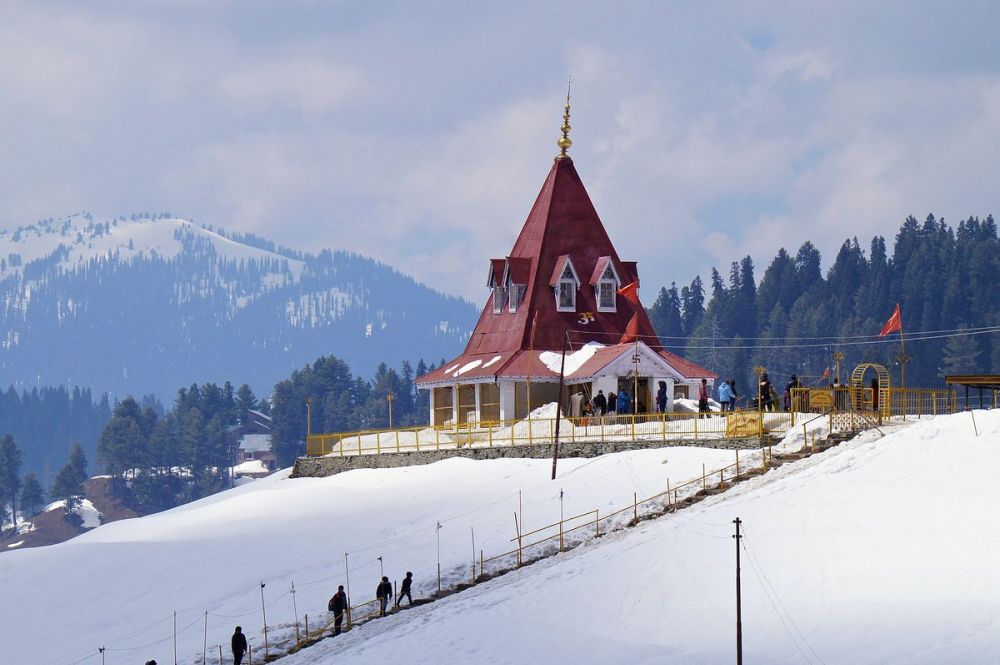

The Rani Temple located in the idyllic town of Gulmarg is one of the most significant historical landmarks in Kashmir, India. The temple stands as a monument of the era gone by and a testament to Kashmir's rich cultural heritage. Gulmarg, which means "meadow of flowers," has a profound history intertwined with the temple, making it a must-visit destination for both devotees and tourists.
The picturesque town of Gulmarg has been a popular retreat for kings and emperors dating back to the 15th century due to its natural beauty and pleasant climate. However, the Rani Temple, also known as Mohineshwar Shivalalaya, gained prominence during the Dogra dynasty. It was commissioned by Maharani Mohini Bai Sisodia, the wife of the erstwhile Maharaja Hari Singh of Jammu and Kashmir. The temple was constructed in the early 20th century and is especially noteworthy because of its queen's patronage, after whom the temple is named.
The temple's architecture is a captivating blend of local Kashmiri designs and colonial influences reflecting the period's aesthetic sensibilities. Perched on a small hillock, Rani Temple's shikhara-style spire is a dominant feature of the Gulmarg skyline. The temple's serene ambiance, coupled with its picturesque backdrop, makes it a photographer's paradise.
Tourism in Gulmarg started flourishing in the late 19th century when British civil servants started using it as a retreat to escape the summer heat of the Indian plains. The development of the royal temple by Maharani Mohini Bai Sisodia further put Gulmarg on the pilgrimage map. Over the years, tourism in Gulmarg has evolved, with the area becoming popular not just for its religious significance but also for adventure sports like skiing and snowboarding, especially since the establishment of the Gulmarg Gondola, one of the highest cable cars in the world.
The latest tourism trends in Gulmarg revolve around eco-friendly travel and experiential stays. Tourists are increasingly seeking out homestays and boutique hotels that offer authentic Kashmiri experiences. There has been a growing trend in nature walks, cultural tours, and seeking out less crowded and more serene spots within the valley.
The Rani Temple itself remains an all-season attraction. In the winter, it stands amidst snow-clad surroundings, offering a sight of sublime beauty, while in summer and spring, it is enveloped in lush greenery and vibrant blooms. The temple also holds a special place during the Shivratri festival, attracting devotees from across the region.
The temple is accessible year-round and can be reached by a short walk from the main market area of Gulmarg. Visitors can enjoy the tranquility of the temple, take in the stunning views of the valley, and immerse themselves in the historical narrative of this quaint hill station.
Note: While the Rani Temple is a significant heritage site, it's important for visitors to respect the sanctity of the place and the local customs associated with it. Proper decorum should be maintained within the temple premises to preserve its sacred atmosphere.
In conclusion, the Rani Temple is not just an architectural marvel but also a pivotal part of the fabric that weaves together the history and tourism of Gulmarg. For anyone looking to explore the spiritual heritage and natural splendor of Kashmir, the Rani Temple is an unmissable destination.